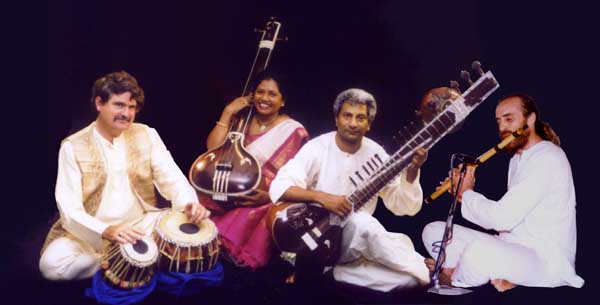
There are many musical instruments in India. Some instruments are used primarily in north Indian music (Hindustani sangeet), some are used in the south Indian music (Carnatic sangeet), while others are found in folk music. Instrumental music is usually similar to vocal music but sometimes there are distinctive instrumental styles.
There is a traditional system for the classification of instruments. This system is based upon; non-membranous percussion (ghan), membranous percussion (avanaddh), wind blown (sushir), plucked string (tat), bowed string (vitat). In addition to these traditional five classes we have been forced to create a sixth class to accommodate purely electronic instruments.
Non-Membranous Percussive (Ghan)
This is one of the oldest classes of instruments in India. This class is based upon percussive instruments which do not have membranes, specifically those which have solid resonators. These may be either melodic instruments or instruments to keep tal.

Andelu – Small brass pellet bells from southern India

Chimpta – A metallic clapper from Punjab

Ghatam – A musical earthen-ware pot

Ghungharu – Brass pellet bells
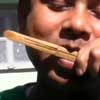
Gogona – A jaw-harp of Assam (plucked idiophone)

Gol Kathi – A dancing stick

Jal Tarang – Musical bowls

Kartal – Wooden clappers

Kasht Tarang – A wooden xylophone

Manjira – Small brass cymbals

Murchang – A metallic jaw harp of South India (plucked idiophone)

Nout – A musical pot of Kashmir
Blown Air (Sushir)
This class of instrument is characterised by the use of air to excite the various resonators.

Algoza – A pair of fipple flutes of North India and Pakistan

Bansuri – A bamboo/ reed flute
1) Overview
2) Bansuri FAQs

Bombashi – A fipple flute of Bangladesh

Harmonium – A reed organ

Mukhavina – A small version of the Nadaswaram

Nadaswaram – A large double-reed oboe of Southern India

Ottu – A drone instrument of South India
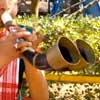
Pepa – A hornpipe of Assam

Pungi – A snake charmers instrument

Shankh – A musical conch

Shehnai – A double reed oboe of North India

Surpeti – A drone instrument

Tarpa – A large tribal hornpipe
Plucked Stringed Instruments (Tat)
This class of instruments is characterised by plucked strings. In ancient times virtually all instruments of this class were referred to as vina.

Bulbul Tarang (a.k.a. Banjo) – A keyed box zither

Dotar #1 – A two stringed stick zither

Dotar #2 (Dotora) – A four stringed lute of Bengal

Dramyen – A sub-Himalayan folk lute

Ektar – A one stringed folk stick zither

Getchu Vadyam (Gettuvadyam) – A hammered lute of South India

Gopichand (ektar) – A one-stringed folk instrument of Bengal
1) Overview
2) Making

Gottuvadyam – A fretless version of the South Indian vina

Katho (Khomok) – A one stringed instrument

Kinnari – A two stringed folk instrument

Magadi Vina – a simple stick zither

Nakula Vina – A simple stick zither

Rabab (Kabuli Rabab) – A rabab of North-West India and Pakistan
1) Overview
2) Rabab Restoration

Rudra Vina – A large stick zither

Santur – A hammered dulcimer

Saraswati Vina – The South Indian large lute

Sarod – A north Indian bass rabab

Seni Rebab – An old version of the sarod

Sitar – Long necked lute of India
1) Overview
2) Psychedelic Electric Sitar Project

Surbahar – A bass sitar

Surmandal – A box zither (harp)

Sursringar – An ancient North Indian lute

Swarabat – A South Indian sarod

Tanpura – A drone instrument

Tuntuna (Chohokhode) – A one stringed folk instrument

Vichitra Vina – A large stick zither

Yazh (Yaal) – A South Indian harp
| This book is available around the world |
|---|
Check your local Amazon. More Info.
|
Bowed-Stringed Instruments (Vitat)
This is a class of stringed instruments which are bowed. This class appears to be quite old, yet these instruments did not occupy a place in classical music until the last few centuries. The entire class of instruments has a certain stigma attached to it. Even today only the Western violin is free of this stigma.
Readers who are interested in the subject should also read the section “Rosin“.

Banam – A folk fiddle of North-East India and Bangladesh

Chikara – A folk spike-fiddle

Dilruba – A bowed lute of North-West India
1) Overview
2) Stringing & Tuning – Section 1 – Introduction (start here)
Section 2 – Basic concepts
Section 3 – Overview of strings
Section 4 – Dilruba/ Esraj Strings
Section 5 – Tools
Section 6 – Stringing the base
Section 7 – Stringing the tuning pegs
Section 8 – Tightening the strings
Quick Guide
a) Very small
b) Small
c) Large
d) Very large
3) Bridge Mod
4) F.A.Q.s on the Dilruba/Esraj

Esraj – A bowed lute of North-East India
1) Overview
2) Stringing & Tuning – Section 1 – Introduction (start here)
Section 2 – Basic concepts
Section 3 – Overview of strings
Section 4 – Dilruba/ Esraj Strings
Section 5 – Tools
Section 6 – Stringing the base
Section 7 – Stringing the tuning pegs
Section 8 – Tightening the strings
Quick Guide
a) Very small
b) Small
c) Large
d) Very large
3) F.A.Q.s on the Dilruba/Esraj

Kamakshi Vina – A folk fiddle of Andhra Pradesh

Kamancha – A bowed lute of Northern India

Kenda – A folk fiddle of North East India

Mayuri Vina (a.k.a. Taus) – A peacock shaped bowed lute of Northern India
F.A.Q.s on the Dilruba/Esraj (This is almost the same as the dilruba and esraj)

Pena (a.k.a. Bana) – A spike fiddle of Manipur

Ravanhasta – A spike fiddle of Rajasthan

Sarangi – A bowed box zither of Northern India
1) Overview
2) Definition
3) Parts
4) Tuning
5) Fingering
6) Photo Gallery
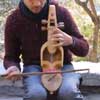
Sarangi (Nepali) – A bowed fiddle of Nepal

Saringda – A folk fiddle of Northern India

Tar Shehnai – A bowed lute of Northern India
1) Overview
2) History
3) F.A.Q.s on the Dilruba/Esraj (The Tar Shehnai is basically just a temporary mod of the esraj)
4) Tar Shenai Conversion – How to convert an esraj to a tar shehnai

Violin – Same as the Western Violin
| Are you interested in a secular approach to teaching Indian music. |
|---|
Indian music is traditional taught in a fashion that is linked to Hindu world views. But there are situations, often in schools, where this approach may not be the best. In such situations The Music of South Asia may be the best resource for you.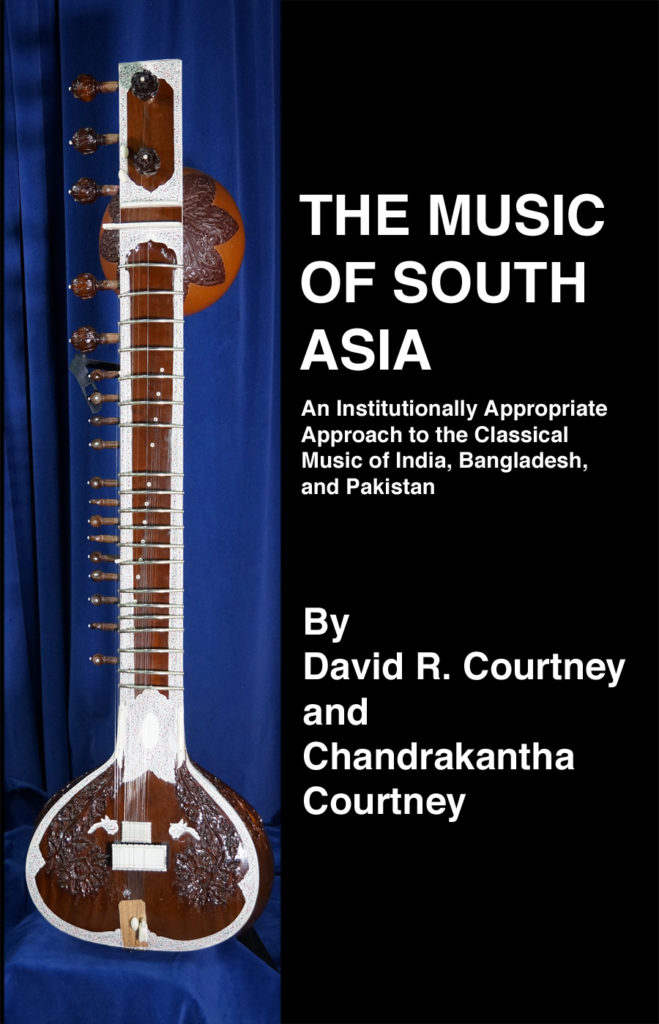 |
Membranous Percussive (Avanaddh)
This is a class of instruments which have struck membranes. These typically comprise the drums.

Charchari – A folk drum

Chenda – A traditional drum of Kerala

Daf (Duf, Daphu, Daffali) – A frame drum

Dakla – A waisted drum

Damaru – A small waisted drum

Dhad – A small waisted drum

Dhak (Daklu) – A drum of Bengal

Dhol – A large barrel drum of Northern India
1) Overview
2) Construction
3) Punjabi (Bhangra) Dhol
4) Kanthi Dhol (Bangla Dhol)
5) Dhol in Other Areas

Dholak – A smaller barrel drum of Northern India
1) Overview
2) Photo Gallery

Dholki (Nal) – A small cylindrical drum of India

Diggi – A small kettle drum

Goga Dhol – A kettle drum

Gummeta (Dakki, Budike) – A small goblet drum of South India

Idakka and Udaku (Udakai) – A waisted drum

Jaspuria – A two faced folk drum

Jhorka & Korka – A folk drum

Kanjira – A small frame drum of South India

Khol (Mridang) – A folk drum of Bengal

Madar – A folk drum of Central India

Maddal – A folk drum of India

Mizhavu – A pot drum

Mridangam – A two faced drum of South India
1) Overview
2) Mridangam and Tabla

Nagada – A pair of kettle drums

Nissan, Mawaloti, or Lohati – Folk drum of Central India

Pakhawaj – A two-faced drum of North India

Pancha-Mukha-Vadyam – A five-faced pot drum

Phara – A two faced drum of Kerala

Pung – A folk drum of Manipur

Sambal – A folk drum of Western India

Shuddha Madalam – A two faced drum of Kerala

Tabla – A pair of Indian hand drums
1) Overview
2) Tabla Making in the Deccan
3) Basic Strokes / Bols
4) FAQs
5) Primer for Older Student
6) Tuning the Tabla
7) Repair and Maintenance
8) Psychoacoustics of Pitch
9) Pudi
10) New Approaches to Instruction
11) Mridangam and Tabla
12) Tabla and the Guitar
13) Photo Gallery
14) The Cyclic Form
15) The Cadential Form

Tabla Tarang – A melodic instrument composed of various tablas

Tamak – A folk drum

Tasha – A folk kettle drum

Tavil – A two faced drum of South India

Thanthi Panai – A pot drum of South India

Timki – A small vessel drum

Tumbak – An Indian version of the doumbek

Urumili – A folk drum
Electronic
This is a class of instruments which are electronic in their operation.

Lahera Peti – An electronic device which plays the lahera / naghma

Mridangam Peti – An electronic device that gives mridangam accompaniment

Surpeti – A drone instrument

Tabla Peti – An electronic device which plays the theka